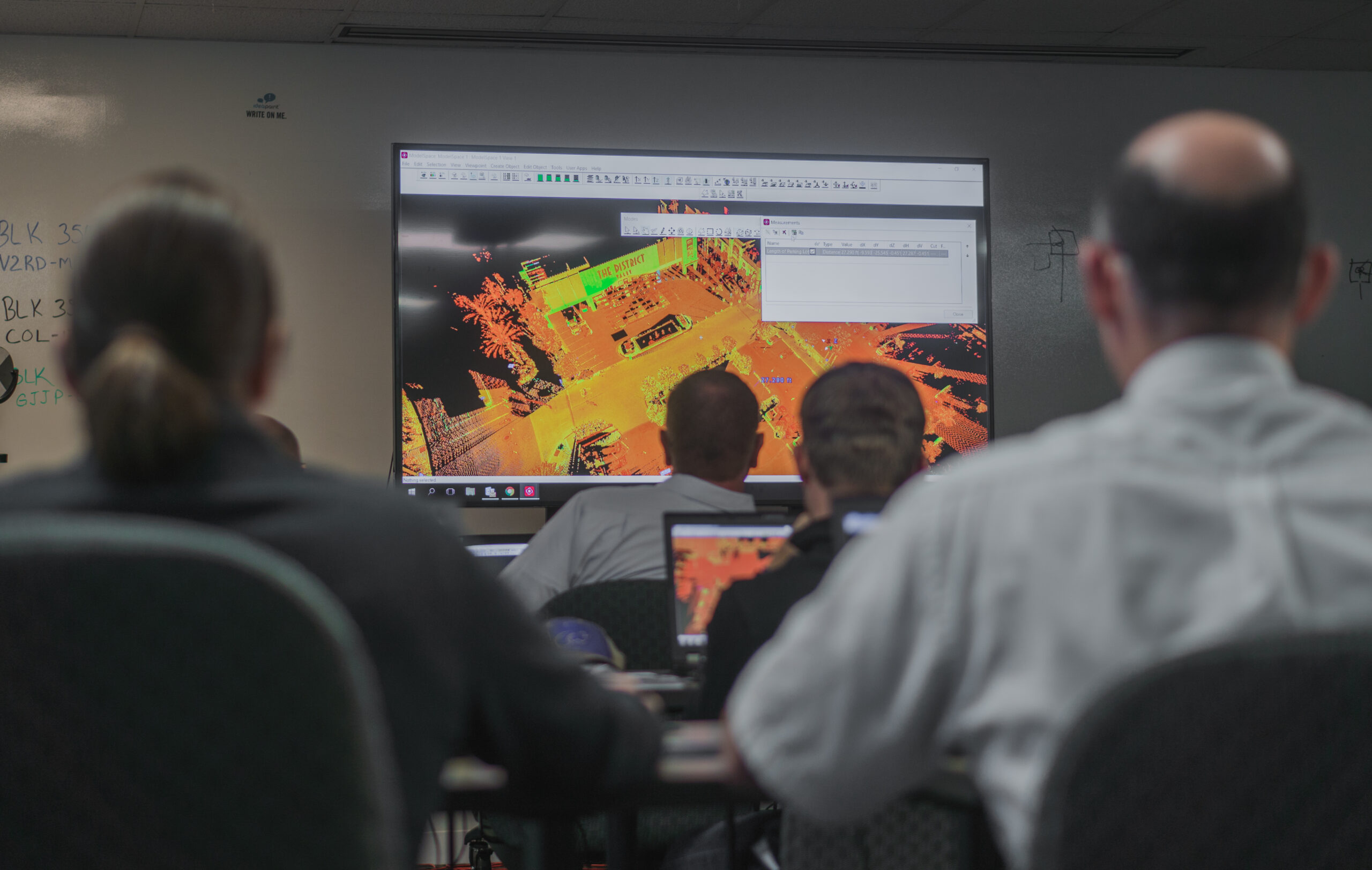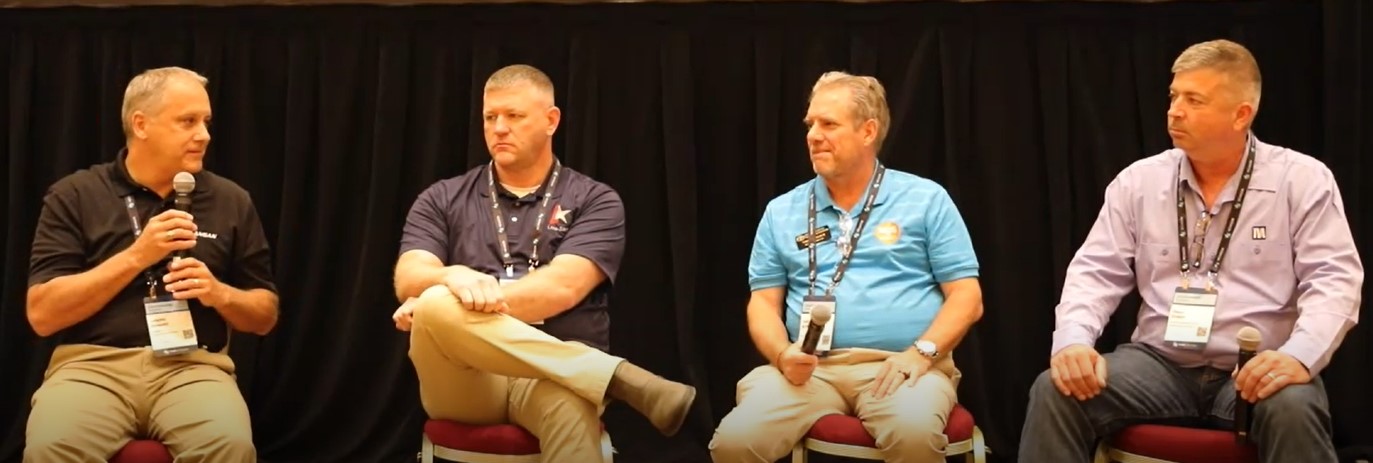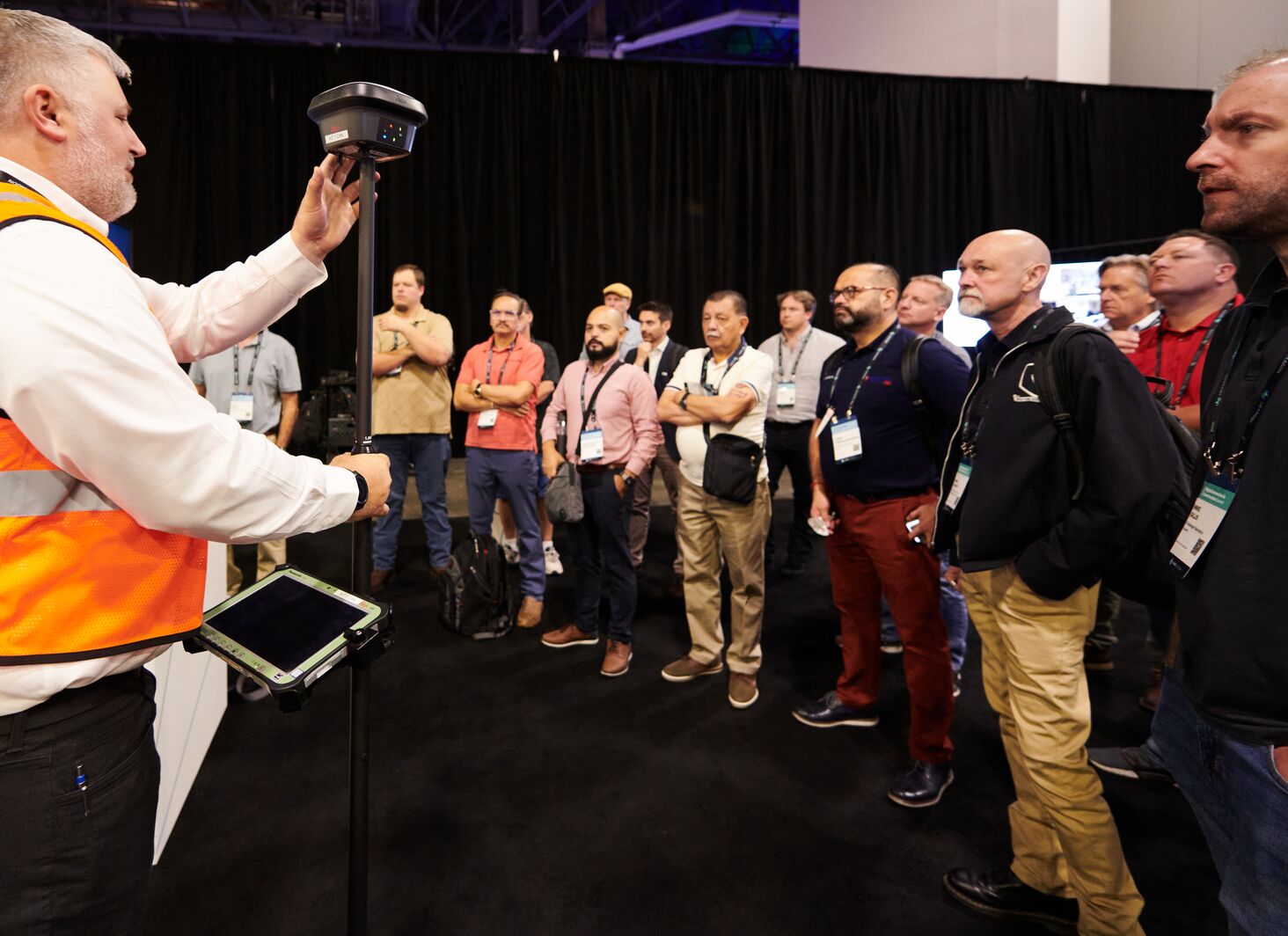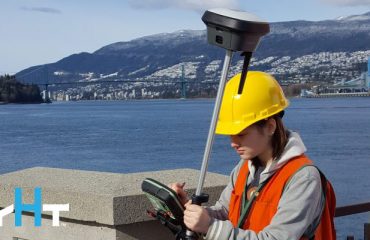Surveyors active in the 3D imaging space agree: Education is the key to recruitment, retention, optimized return on investment, and the readiness to be innovative and take on the next opportunity.
Back in 2007, early adopters of laser scanning predicted it would become a “need to have” technology in the surveying industry within a few years. While that has proven true in many ways, continued innovations and evolving applications mean that surveyors are still in the process of demystifying the technology, its useful applications and its benefits to both their own colleagues and their clients.
“I’ve been scanning for about 20 years, and there is still a lot of confusion on the client side about the benefits of 3D data, its cost value, and how it can solve problems for them,” says Joseph Romano, PLS, director of surveying for Langan Engineering. “So there is still a need to educate clients on the value-added tools of laser scanning and point clouds.”
Many heads were nodding as Romano shared this perspective to a packed room at HxGN LIVE 2022 in Las Vegas, NV, as part of a panel discussion on using survey data to create high-value deliverables.
And many surveyors active in the 3D imaging space readily agree that education is the key to resolving a number of factors that continue to hold laser scanning back from achieving its potential.
Here are four reasons Romano and the other panelists highlighted in their discussion why education is as important a tool as the technology itself.
1. Recruitment
Although nothing in the world gets built without the surveyor, maintaining a sufficient talent pool has been a struggle for the industry for decades. Simply put, there haven’t been enough young people entering the profession to replace those who are aging out and retiring.
That shortage has not only been holding up civil engineering and construction projects across the country, it’s been putting a strain on survey companies to stay competitive.
Timothy Burch, PLS, executive director of the NSPS, says changing the script around the perception of surveying and customizing the message to different audiences are effective ways to promote the profession. And that advocacy can start in the elementary and middle school classroom.
“Connecting with younger generations in their own language is essential for recruitment. And we have to be open to any and all. Many still think of a surveyor as an old guy on the side of the road with a tripod, taking pictures. Kids and young adults need to know today’s surveying is about creating the same 3D worlds in the real world that they see in their video games. It’s also talking to the 25- to 35-year-old graduates who are still looking for an identity. We need to impress that if you’ve got a bright mind who likes to solve problems and has spatial intelligence, then a surveying career is for you.”
2. Retention
So once we have our skillful survey crews, how do we retain them? Professional development and cross-training are two effective incentives.
Providing mentoring opportunities, upskilling through continuing education and offering routine training on both equipment and other business operations creates a more educated workforce, enhances each employee’s sense of worth and fosters a sense of the organization working as one.
“Everyone we hire for an office position spends time in the field because they have to understand what it takes on the ground to get jobs done,” says Rob Davis, RPLS, PLS, director of surveying for Lamb-Star Engineering. “And new surveyors are brought inside to experience office functions such as field coordination. Understanding one another’s tasks and challenges creates camaraderie and appreciation for everyone’s role. That cross-training develops a more skilled workforce and increases morale.”
3. Return on Investment
For both surveying companies and clients, understanding that the higher upfront costs for valuable datasets are worth the price tag is key to reaping the ROI rewards of laser scanning.
Project costs used to center on field time. Now the value proposition is about the data and the deliverable. Surveyors need to fully understand how the technology can be a solution to their clients’ problems – even ones they don’t know they have yet – and be willing to guide clients’ through the process.
“We publish the point cloud with TruView to make the data available to clients so they can see the point cloud data,” says Tracy Seiber, RLS, a professional surveyor with Tennessee Valley Authority. “I’ve answered many phone calls and shared my screen with them to walk them through the data and show them how to isolate just what they need. That helps strip away confusion and complication. Once they begin playing with the data, they want more. So I never turn away that educational opportunity because that’s the next pitch for the next job.”
“Understanding one another’s tasks and challenges creates camaraderie and appreciation for everyone’s role. That cross-training develops a more skilled workforce and increases morale.”
4. Readiness
It’s not only important to be field ready, it’s important for surveyors to educate themselves on clients’ work environments so they can better speak their language, understand their needs and educate them on viable options for them.
Often providers focus on the cool factor of 3D technology rather than articulating how it can solve an existing problem. Taking the time to educate themselves on a potential project beforehand can help surveyors better anticipate how 3D data will help a client, particularly for highly specialized work environments such as nuclear plants.
“If you educate yourself on traditional methods a particular client typically uses, then you can ask intelligent questions and present options back to them in a way they’ll understand,” says Seiber. “Because the end goal is to make them aware that the project can’t be done without you.”
It’s clear that education is more than just teaching the client. It’s about educating young prospects on surveying opportunities, it’s about learning the technology and its limitations, it’s about bettering oneself by cross-training and gaining the respect of colleagues, and it’s about understanding client work environments to effectively resolve specific problems.
Attending technology conferences like HxGN LIVE Global is one way to accelerate your education through networking, hands-on technology demos, and engaging panel discussions like this one. HxGN LIVE Global 2023 is happening 12-15 June at CAESARS FORUM in Las Vegas. Go here to explore sessions in the Surveying Summit, and register here to attend.
To talk to one of our experts and learn more about ways to optimize your surveying potential, please contact us.
About the Author
 Mary Jo Wagner is a Vancouver-based freelance writer with 30 years experience in covering geospatial technology. She can be reached by phone at 604-221-4583 or e-mail at mj_wagner@shaw.ca.
Mary Jo Wagner is a Vancouver-based freelance writer with 30 years experience in covering geospatial technology. She can be reached by phone at 604-221-4583 or e-mail at mj_wagner@shaw.ca.





